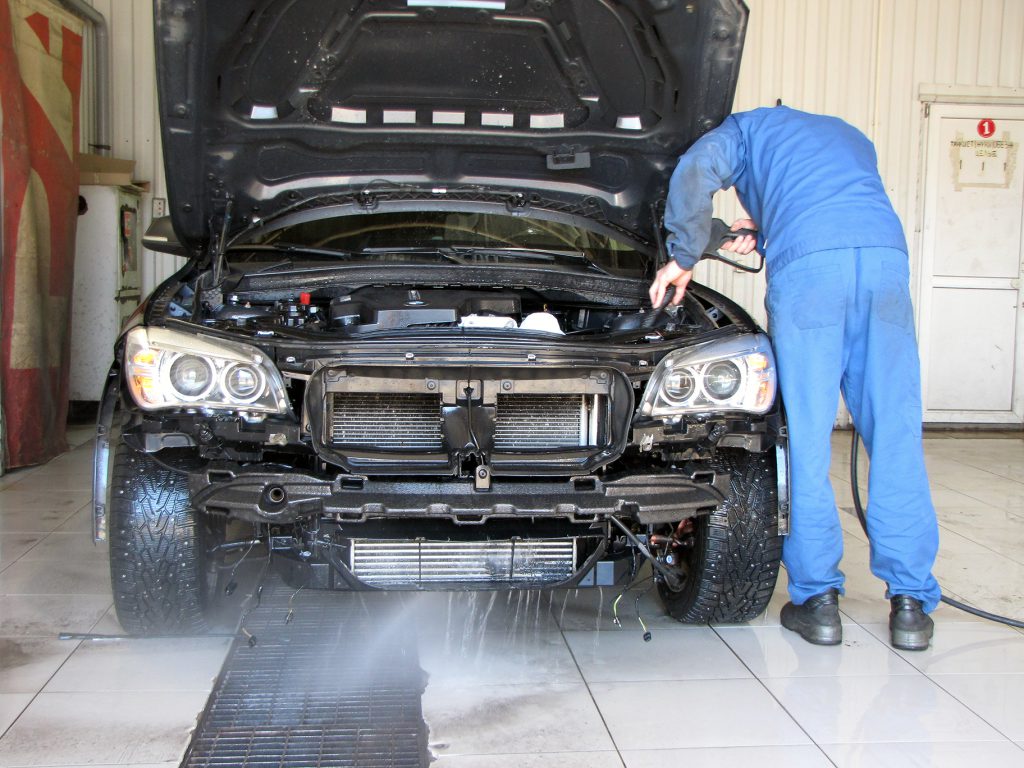Several radiators can be installed on a modern car at once, for example, from the power steering, automatic transmission, air conditioner condenser and intercooler. The radiator of the engine cooling system is always installed last in the direction of the air flow, as a result of which the incoming airflow cools it much worse. This is partly why, with significant contamination of the radiators, it is the engine cooling system that ceases to cope with its task, while the rest, even the heat exchangers heavily clogged with dust, work poorly.
Another problem is that radiators are often clogged not only from the outside. Their internal surfaces can accumulate rust, scale, and oxides. Therefore, when the car has run more than 80 thousand km, it is recommended to combine external cleaning of the heat exchanger of the cooling system with a complete replacement of the coolant.
The easiest way to clean a radiator
The simplest method considered below is suitable only for the most inexpensive cars without air conditioning, because they have only one radiator. It is very easy to get to it, as it is often not even necessary to dismantle the device.
The heat exchanger is simply rinsed with running water from a hose or a high-pressure household sink. In the latter case, it is only necessary to ensure that the pressure is not too powerful, for which the washing gun should not be brought too close to the radiator grille. Otherwise, the heat sink plates of the heat exchanger can easily bend, and the radiator, ceasing to pass through a sufficient amount of air, will cease to work effectively.
Immediately before rinsing, it is advisable to spread a regular plastic film behind the heat exchanger so as not to fill the drive belt, candles and generator with dirt and water. Also, do not direct the water flow directly to the fan motor, although accidental splashes do not pose a threat to it.
If there are several radiators in the car
In this case, a simple flush without dismantling the device is unlikely to be effective. After flushing the first heat exchanger in the course, the jet will inevitably lose pressure, and it will not be enough for the next radiator in the course. You can try using a different scheme: rinse the condenser of the air conditioner from the outside, and drain the radiator from the inside. However, it is often not possible to get rid of a layer of dust and poplar fluff between two heat exchangers in this way.
If the radiator grille of the car can be dismantled without removing the bumper, then flushing is facilitated. First, you need to flush both heat exchangers from the outside in the described way, and then, having disconnected the upper mounts of the engine cooling radiator, tilt it and clear the space already between the heat exchangers.
The method of dismantling the radiator and then manually flushing it is more difficult, but more effective. To do this, first remove the electric fan along with the casing, then disconnect the radiator from the engine and the condenser of the air conditioner. The latter is usually tried to simply put aside, preventing depressurization. Otherwise, additional refrigerant filling will be required.
To achieve the best flushing result, it remains to drain the coolant from the engine cooling system and rinse all circuits several times with clean water. This way, almost all accumulated dirt is removed from the internal surfaces, unless, of course, you have previously used high-quality coolant. Otherwise, you can additionally use descaling tools.
If the article was useful to you, then be sure to share it with your friends!
Avaruosad.ee – online auto parts store
Need spare parts for your car? Call for free consultation:
- +372 56 812 812
- info@avaruosad.ee


